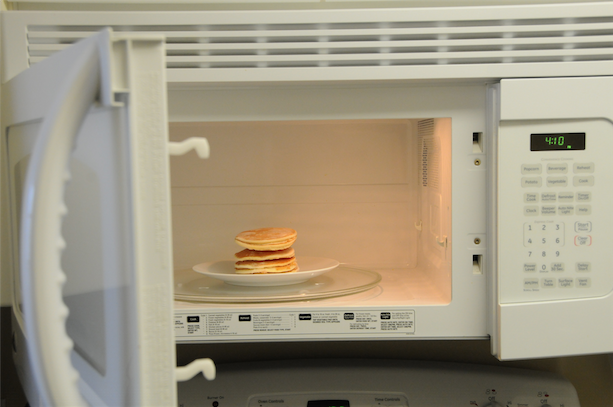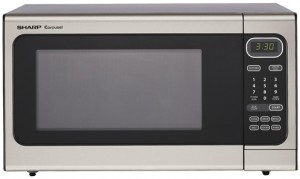With one in just about every household in America, it’s a rarity to find a family that doesn’t use a microwave oven to cook or reheat their food items. Reports suggest that over the past ten years, microwave sales have fallen or remained flat. This however, does not mean that Americans have stopped using microwave ovens. In fact, some 90% of all households in the United States own a microwave oven.
The ease of use, the quickness of cooking, and the efficiency in which microwaves cook food are just a few of the reasons for their popularity. With the age of immediacy that we live in, most people can’t seem to get by without their microwave! Many families that use these machines however are not aware of the potential hazards that they can have on health and wellness.
About Microwaves
Microwaves are used for a variety of reasons: to detect speeding cars, send telephone communications, and to raise bread dough. Even though commercial industries use microwaves, much of the way that consumers receive microwave energy is from microwave ovens. Since 1971, the Food and Drug Administrations (FDA) has regulated the manufacture of microwave ovens. Due to these regulations, microwave ovens that meet standards and are used according to manufacturer’s instructions are considered safe for use.
Despite the FDA regulations, microwave radiation is not safe. It can be hazardous to an individual’s health. Microwaves are a form of “electromagnetic” radiation and can range from “energetic x-rays to less energetic radio frequency waves used in broadcasting.”
These waves have three characteristics that make them very good for cooking. Microwaves are:
- Reflected by metal
- Can be passed through glass, paper, plastic, and similar materials
- Absorbed by food
What Happens to Food in a Microwave?
Understanding how microwave ovens work is the first step to safety while using them. Microwaves use waves of energy to cook food. These types of waves are incredibly selective, primarily affecting water and other molecules that are electrically asymmetrical. Microwaves cause the molecules to vibrate and quickly build up thermal energy (heat).
When food is cooked, it loses some of its nutritional value no matter if it is cooked in a microwave or a conventional oven. Water also makes nutrients break down in food. Boiling vegetables leaches the food of its nutrients. For example, boiled broccoli loses glocosinolate, a cancer-fighting compound that makes the food a nutrient-rich source. Steaming, on the other hand, is a much better way to preserve the glucosinolate.
Microwave ovens cook food quickly, which can actually retain nutrients with a little amount of water. Cooking in a microwave with a small amount of water essentially steams the food from the inside out, which may retain vitamins and minerals better than boiling or cooking them for long periods of time in an oven!
Does Food Absorb Microwaves?
On a molecular level, food absorbs the energy of the microwaves. When this happens, ions in the food polarize and rotate, causing collisions. The electromagnetic waves produced by microwave ovens have so little energy that they are actually unable to cause chemical changes in the molecules that they encounter. They are non-ionizing waves and do not leave a residue. Microwaves do, however, heat food to very high temperatures and can hydrolyze carbohydrates, vitamins can be destroyed, and some sugars or proteins may interact. These same absorptions and chemical breakdowns can happen when food is heated in a conventional oven and cooked for long periods of time.
How to Cook Safely in a Microwave?
Cooking food in a microwave is considered safe, but safety and health concerns of radiation as well as thermal burns can still be a risk. Follow proper precautions for safety when using a microwave and always abide by manufacturing recommendations. The FDA recommends:
- Follow manufacturer’s instruction manual for operating procedures.
- Don’t operate a microwave oven if the door is bent, warped, not firmly closed, or damaged.
- Never operate a microwave oven if you have reason to believe it will continue to operate with the door open.
- Always use microwave-safe containers. Metal and aluminum containers should not be used.
- If you expect a leakage or problem with your microwave oven, do not operate it. Contact your state health department, manufacturer, or closest FDA office.
Can I Use a Microwave Oven with a Pacemaker?
Having a pacemaker does not need to change your entire lifestyle, but there are important things that you may need to avoid if you have a pacemaker. Avoid close or prolonged contact with electrical devices that have strong magnetic fields. Devices such as microwave ovens may disrupt the electrical signal of your pacemaker and stop it from working properly. When using a microwave oven, avoid standing in close proximity for a long duration of time.
Overall, knowing what types of electromagnetic energy you’re being exposed to on a daily basis can enhance your ability to maintain good health and avoid potential risk for radiation. It’s very rare that radiation from a microwave will cause extreme sickness, but if you have devices such a pacemaker or other health risks, the prolonged exposure to any type of radiation can present health risks.
Microwaves are undeniably convenient appliances that have changed the way that Americans cook, but they should never be used to cook food for long durations. They should also be replaced within a reasonable amount of time to ensure quality and safety of the appliance.
I recommend eating fresh, raw, organic fruits and vegetables as often as possible. When it comes to fruits and vegetables, the less heat the better, regardless of the source.









